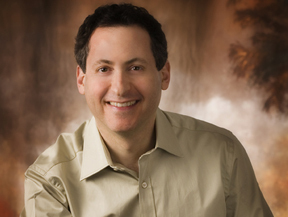The brain mapmakers
by
Brendon Nafziger, DOTmed News Associate Editor | September 07, 2010

Jack Glaser founded the
company with his father.
(Image courtesy
MBF Bioscience)
What do studies on ape language, the biological basis of schizophrenia and the neurological damage wrought by Alzheimer's have in common? Many are made possible by sophisticated brain cell analysis software developed by MBF Bioscience Inc.
Founded in 1987 by a father-son team, the Williston, Vt.-based life science technology company might be relatively small, with around 35 employees, but it's having an outsize impact on neuroscience.
The company's bread and butter is its software for stereology, a technique that lets you obtain quantitative estimates of a population based on a sample. Originally developed in the 19th century for mining, the technique is paying off for the biological sciences, too. MBF Bioscience says one of its flagship programs, Stereo Investigator, has been cited in more than 1,000 peer-reviewed articles.
"I like to say it's a good way to make accurate, unbiased estimates of quantities, rather than make direct measurement of quantities," Jack Glaser, the company's president, told DOTmed News.
As Glaser explains it, you basically look at a few 2-D sections of some 3-D thing - a brain or a rock, for example - and then through random sampling you're able to extrapolate what the whole thing is like from those sections. In the case of MBF Bioscience's applications, it's largely to obtain numerical estimates of cell populations and structure of neurons.
Glaser compares the process to political polling. Much as with estimating the results of an election, you don't ask all of the individual voters whom they're voting for. Instead, you carefully sample a handful of them, say 300, and if you use the right tools, you can get an estimate, within a certain margin of error, of what the outcome will be.
"It's a way you can estimate things without counting them all up," Glaser said.
From the size of a closet to the size of your palm
Stereo Investigator launched about 15 years ago, but roots of the company stretch back to the mid-1960s and the work of Glaser's father, Dr. Edmund Glaser, a neuroscientist.
At that time, Glaser's dad developed a kind of computer-microscope to bring some quantitative rigor to anatomical studies of the brain, in an effort to develop 3-D neuron reconstructions.
"A lot of anatomy was done qualitatively by people describing what they saw," Glaser said. "My dad was a visionary at that time. He thought the only way you'll be able to identify small changes not visible to the eye was to measure things."
Later, in the mid-1980s, when 3-D reconstructions of the brain had become more refined, performing these functions was limited to only a handful of laboratories around the world due to the expense of the computers needed to do the analysis. The operations could only be handled by huge, closet-sized machines, called DEC computers, which cost upward of $100,000 and required a live programmer on premises to run.
